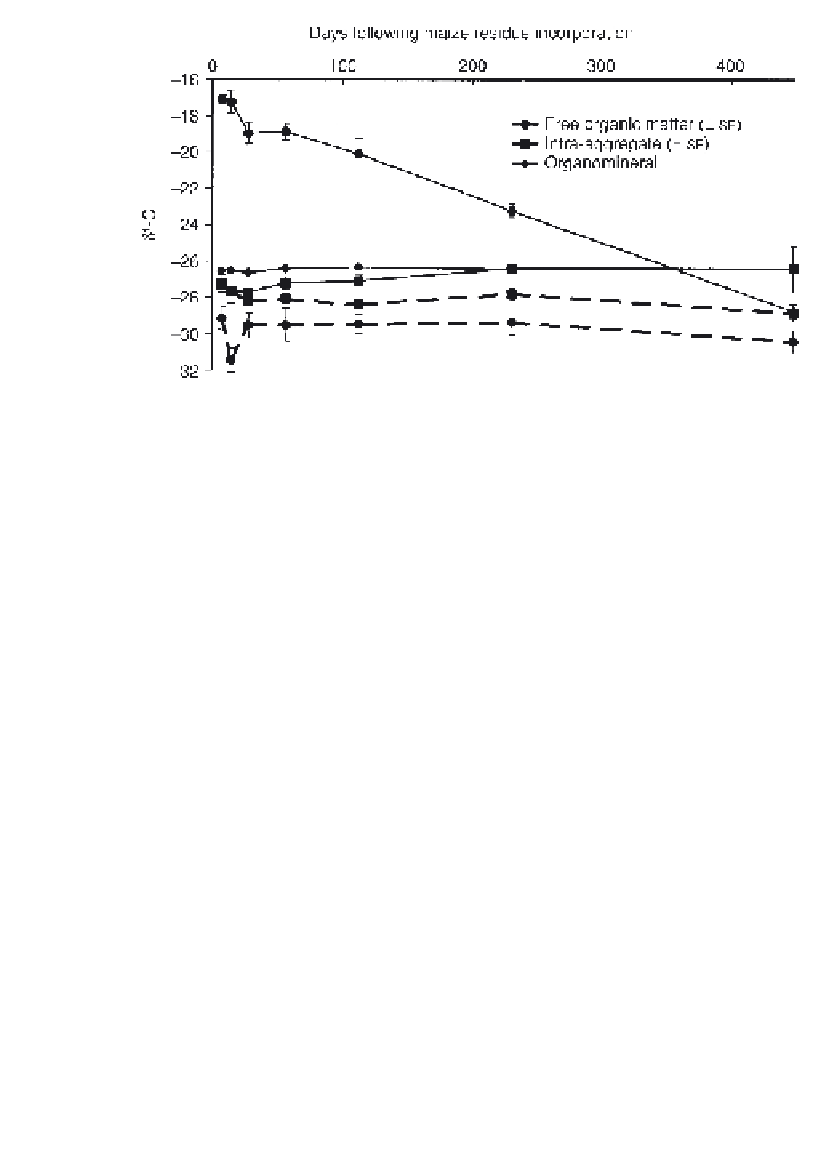Agriculture Reference
In-Depth Information
Fig. 2.6.2.
13
C signal of soil organic matter recovered from a C
3
soil after addition of C
4
plant residues. Dashed lines represent the unamended control.
The
δ
in the intra-aggregate. The appearance of maize-derived material in the
organomineral fraction cannot be seen; this may be either because this frac-
tion is less important to describe short-term turnover of C or because the
large amount of C in this fraction masks the incorporation of maize-derived
material. Results for
15
N show similar patterns and thus are not shown here.
The difference between the
13
C enrichment at natural abundance of
the free and intra-aggregate fraction in the unamended control soil may
reflect isotope discrimination during the decomposition of organic matter.
The products of microbial transformation are generally enriched in the
heavier isotope form when compared with the substrate. Thus the fact that
the intra-aggregate material is less depleted in
13
C than the free fraction,
and therefore heavier, appears to confirm the results above that suggest that
the free fraction represents less altered organic matter when compared with
the intra-aggregate.
δ
Conclusion
An extraction protocol that meets the basic requirements for a model based
on measurable pools is presented. The solid organic fractions obtained by
our physical fractionation procedure (i.e. free and intra-aggregate fractions)
show strong contrast in chemical composition. These differences have been
found to be consistent across environment and soil type.
Preliminary isotope data suggest that we can measure fluxes of added C
through the pools defined in the model. Thus we can derive the reactivity,











Search WWH ::

Custom Search